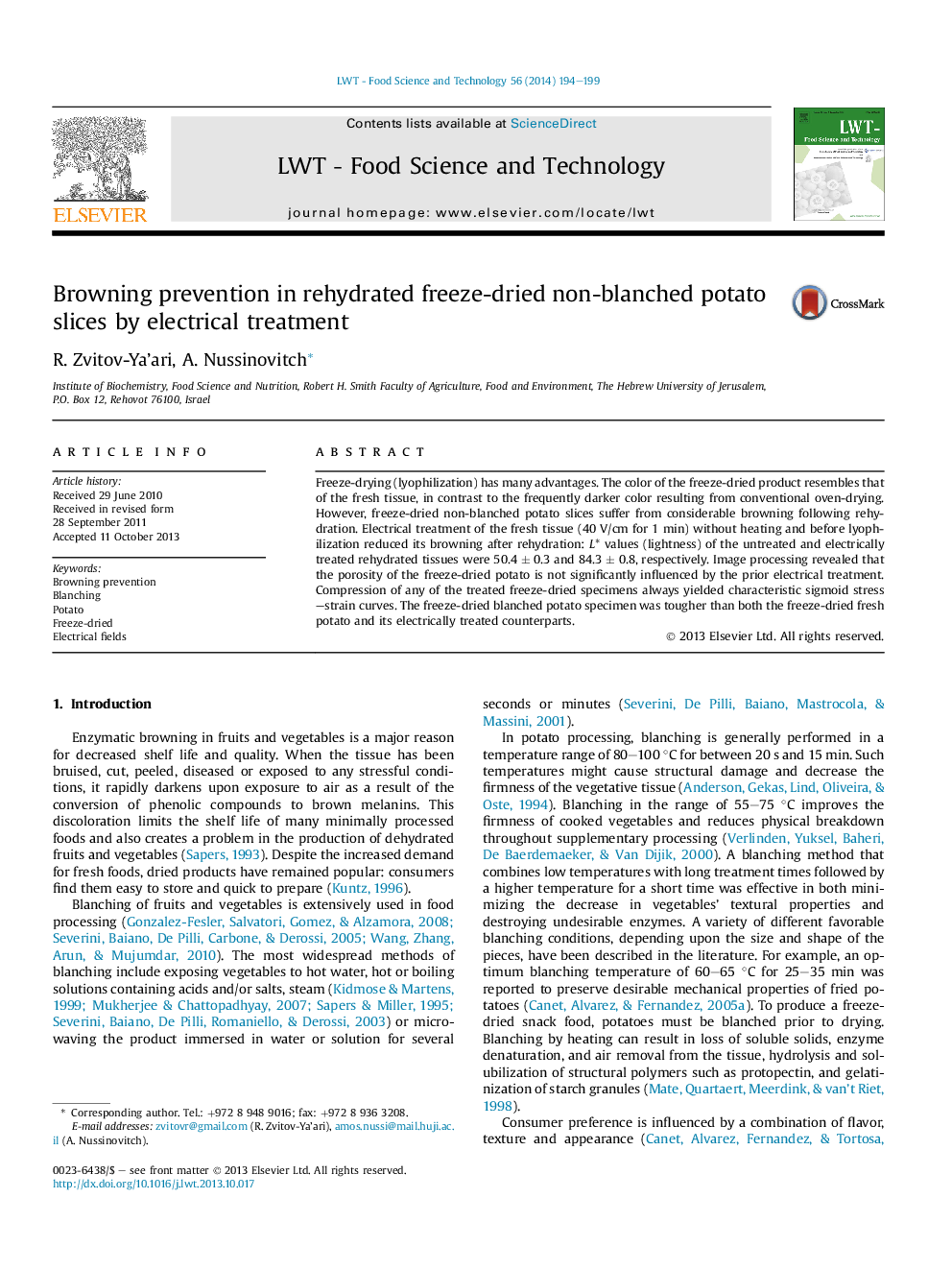| Article ID | Journal | Published Year | Pages | File Type |
|---|---|---|---|---|
| 4563897 | LWT - Food Science and Technology | 2014 | 6 Pages |
•Freeze-dried non-blanched potato slices show significant browning when rehydrated.•Electric treatment of freeze-dried non-blanched rehydrated potato reduced browning.•The electric treatment had little effect on the porosity of the freeze-dried potato.
Freeze-drying (lyophilization) has many advantages. The color of the freeze-dried product resembles that of the fresh tissue, in contrast to the frequently darker color resulting from conventional oven-drying. However, freeze-dried non-blanched potato slices suffer from considerable browning following rehydration. Electrical treatment of the fresh tissue (40 V/cm for 1 min) without heating and before lyophilization reduced its browning after rehydration: L* values (lightness) of the untreated and electrically treated rehydrated tissues were 50.4 ± 0.3 and 84.3 ± 0.8, respectively. Image processing revealed that the porosity of the freeze-dried potato is not significantly influenced by the prior electrical treatment. Compression of any of the treated freeze-dried specimens always yielded characteristic sigmoid stress–strain curves. The freeze-dried blanched potato specimen was tougher than both the freeze-dried fresh potato and its electrically treated counterparts.
